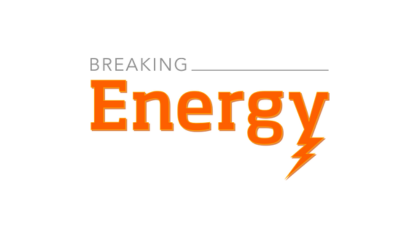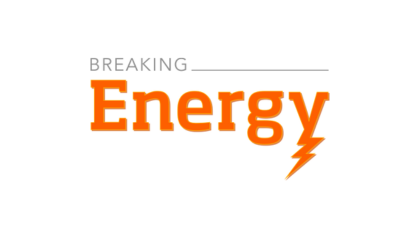The Federal Gulf of Mexico is one of the fastest-growing offshore markets with yet-to-be-discovered potential of about 48 billion barrels of oil, according to various US data. The latest EIA data allocate 17% of US crude oil production in 2013 to the federal offshore Gulf of Mexico. Could the future of the US oil industry lie far offshore in the deep waters of the Gulf and, above all, deep underneath the “mud-line”?
Crude Oil Reserves in the Federal Gulf of Mexico are Under-exploited
According to the IEA, at least 10% of the world’s remaining recoverable conventional oil and gas resources lie below the ocean’s surface in deep water. They are projected to become a vital part of the future energy mix as deep water oil and gas production is expected to increase significantly from current levels to about 8.7 million barrels of oil equivalent (BOE) by 2035. Globally, the Gulf of Mexico is one of the most important regions for energy resources and existing infrastructure. The EIA notes, for example, that over 40% of total US petroleum refining capacity is located along the Gulf coast. Ernest Leyendecker, Anadarko Petroleum’s Senior VP of Exploration (Gulf of Mexico), calls the Gulf “one of the unrivaled basins of the world” pointing to its geology, commercial potential of discoveries, the existing pipeline network as well as production infrastructure, and, therefore, reasons that “[a]ll three of those things give the Gulf significant advantages over almost anywhere else in the world.”
In addition, what makes the Gulf so attractive for oil majors is the possibility of large finds in one place with hundreds of millions, perhaps even billions, barrels of oil equivalent. To be economically viable, discoveries simply have to be big. Moreover, the strategic implications for oil majors are immense. Companies can add incremental proved reserves to their balance sheets in what appears to be an oil-constrained world over the long term. Key to unlocking those reserves are experience, engineering innovations in deep-sea drilling and advances in technology – i.e. increased computer capacity as well as new seismic equipment – all together allowing for the exploration of previously out-of-reach subsea layers of rock. Deep-water drilling, defined as water depths of 1,000 feet (~304 meters) or more, started with Shell’s Gulf of Mexico Cognac field in 1978. Since then, the water depth of discoveries has trended deeper and deeper and has reached so far its culmination point with Shell’s Gulf of Mexico ultra-deep-water Stones project – still in progress – at a record water depth in the area of 9,500 feet (~ 2,900 meters). According to Shell, production from Stones’ first phase of development is anticipated for 2016.
Shell’s Stones’ Project
The next chart shows steady progress over the years from shallow-water platforms to highly complex and capital-intensive ultra-deep-water oil development projects. Note, production facilities in a water depth of over 5,000 feet are considered ultra-deep-water projects, though depth distinctions can vary.
Shell’s Deep-Water Oil & Gas Projects
The major players in the development of deep-water oilfield reservoirs in the Gulf of Mexico are ExxonMobil, Chevron, Royal Dutch Shell and BP. With substantial investment pouring into offshore projects, the rig count in the deep water off the US coastline is expected to increase significantly over the next couple of years. The Lower Tertiary trend shows considerable potential. Estimates project about 15 billion barrels of recoverable oil could lie in the source rocks, Bloomberg reports. Though high costs and technical challenges stand in the way.
Outline of Technical Challenges in Deep-Water Realm

These challenges alone limit the number of oil companies capable of tackling such ultra-deep-water projects to a handful of operators with highly-skilled workforces, advanced technological capabilities, experience with similar reservoirs, reputations for operational excellence and a track record of world-class safety performance, not to mention strong balance sheets. True value in terms of experience, engineering, and drilling comes from undertaking projects like those in the Lower Tertiary formation, which allows companies to acquire many of the aforementioned characteristics in the first place. Foremost, the oil majors’ Gulf of Mexico experiences in the Lower Tertiary may prove invaluable for similar ultra-deep-water projects offshore Africa and Brazil, in the South China Sea or offshore Myanmar in the Bay of Bengal.
Lower Tertiary Trend in the Gulf of Mexico
Shell’s floating Perdido project, which it jointly owns with Chevron and BP, was the first Gulf project from the Lower Tertiary to begin production in 2010. Chevron, meanwhile, is pursuing its Jack & St. Malo project with production start-up expected in 2014 in the same Lower Tertiary formation. Likewise, ExxonMobil is pursuing the development of the Julia oil field in the same ultra-deep-water area with its resources reportedly recoverable at depths up to 30,000 feet beneath the seabed. Interestingly, James Osborne of the Dallas Morning News brings attention to the fact that Exxon has been “for years [only] a small presence in the Gulf” in comparison to its rivals. The following chart points to significant growth potential in the relatively underrepresented ‘deep-water’ category within Exxon’s resource portfolio.
Exxon Mobil’s Proven Reserves Distribution (2013)

Source: ExxonMobil 2013 Financial and Operating Review; via ExxonMobil “Energy and Carbon — Managing the Risks”
The Julia oil field, however, seems to fulfill Exxon’s strict internal investment metrics with an estimated six billion barrels of resource in place and capital cost for the project estimated at over $4 billion, a press release by Exxon says. First oil is expected in 2016. The Julia field is estimated to have a production life of up to 40 years, offshore-technology reports.
This brings us to BP, which is historically one of the largest investors and producers in the Gulf of Mexico. According to a BP press release, the company is the leading acreage holder in the deep-water area with equity in more than 650 leases. After the accident with BP’s Macondo well, followed by a six-month moratorium on drilling projects at depths greater than 500 feet and tightened US regulatory oversight of the offshore oil industry, the EPA recently announced that it would lift a 2012 ban imposed on BP preventing it from bidding on new exploration acreage leases in the Gulf.
BP’s deep-water activity is likely to increase, especially in light of this statement by Richard Morrison, Regional President of BP’s Gulf of Mexico business, who uttered: “The addition of (…) new rigs reflects the vital importance of the deepwater Gulf of Mexico to the future of BP.” BP also anticipates investing on average at least $4 billion in the Gulf each year for the next decade.
Although the majors are currently reigning in capital expenditure and exploration costs could increase with post-Macondo regulatory changes, the approximately 60 deep-water drilling rigs operating in the Gulf could also increase over the medium term, given the region’s attractive resource potential and existing infrastructure.





